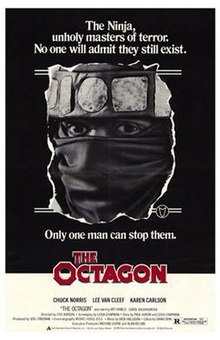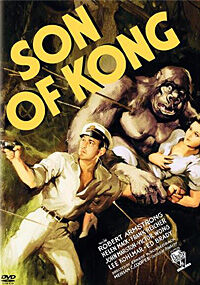RAY HARRYHAUSEN SPECIAL EFFECTS TITAN, CORMAN’S WORLD AND THAT GUY DICK MILLER
It’s often been said that Ray Harryhausen’s stop motion animation creatures are the best features of their respective films, everything from “Mighty Joe Young” and “Earth vs. The Flying Saucers” to “Jason and the Argonauts” and “Clash of the Titans.” He became the auteur.
It’s not often that a visual effects artist overshadows both directors and performers, no offense to Nathan R. Juran (“The 7th Voyage of Sinbad”), Don Chaffey (“Jason and the Argonauts”), and the all-star cast in “Clash of the Titans,” Harryhausen’s grand finale.
In fact, in reviewing “Clash of the Titans” a while back, I wrote that it amounts to Harryhausen vs. nominal star Harry Hamlin. Harryhausen wins. Every. Single. Time.
Then again, maybe not. Not when People Magazine featured Hamlin as the “Sexiest Man Alive” in 1987 and it felt like taking a potshot or two at “Clash of the Titans.”
“And there’s always the possibility of doing a remake of ‘Clash of the Titans.’ ‘I brought my toga home,’ says Harry, raising hopes of another glimpse of those knees. He’s kidding, of course. Frivolous flicks are a thing of the past for The Sexiest Man Alive. Besides, says Harry, laughing, ‘I used the toga to wash my car.'”
While pretty boys are a frivolous matter of the past, even in the present, Harryhausen’s creatures will live on forever.
“Special Effects Titan” allows us the opportunity to hear who and what inspired Harryhausen, his thought and work process on his creations, what challenges he faced, and to see the actual models used. Harryhausen (1920-2013) kept the most minute details in his garage.
— Roger Corman, who turned 94 a month to the day before I watched this documentary, has accumulated 415 producer and 56 director credits over a 65-year period. American International and New World produced some of the best exploitation films ever made along with a ton of schlock (some enjoyable, some not so much).
Peter Bogdanovich, Francis Ford Coppola, Monte Hellman, Martin Scorsese, Ron Howard, Jonathan Demme, Jonathan Kaplan, Joe Dante, Allan Arkush, Jack Nicholson, Peter Fonda, and Pam Grier all had their start or their break working for Corman and most of them appear in “Corman’s World: Exploits of a Hollywood Rebel.” Several more big names also appear in “Corman’s World,” but I would like to move on to the next paragraph.
We see Corman working on location as producer on the 2010 TV movie “Dinoshark,” which instantly calls to mind previous Corman productions like “Piranha” and “Humanoids from the Deep.” Near the end of “Corman’s World,” we also see the Hollywood outsider receive an honorary Oscar for “his unparalleled ability to nurture aspiring filmmakers by providing an environment that no film school could match.” It’s only fitting, though, that “Corman’s World” goes out with a set of clips scored by the Ramones’ explosive title song from “Rock ‘N’ Roll High School.” That’s more in the Corman spirit than any award, as Riff Randell blows up Vince Lombardi High School.
“Corman’s World” reminds me that I should watch “The Intruder” (Corman’s most atypical directorial entry, called “one of the most brutal, honest, and unflinching examinations of American racism in cinema history” by Wheeler Winston Dixon in “Senses of Cinema”), thankfully touches on New World’s distribution of films by Bergman, Truffaut, Kurosawa and Herzog, and shows us Jack Nicholson crying over Corman.
Nicholson made his film debut in Corman’s 1958 production “The Cry Baby Killer” and most of his credits before 1969’s smash hit “Easy Rider” are Corman productions, including most famously “The Little Shop of Horrors” and “The Terror.” Corman productions “The Wild Angels” and “The Trip” paved the highway for “Easy Rider.”
Matter of fact, Corman laid a lot of pavement for the road ahead.
— I generally prefer character actors over stars and that group of character actors includes Sydney Greenstreet, Margaret Hamilton, John Cazale, M. Emmet Walsh, Harry Dean Stanton, Brad Dourif, and, of course, perhaps my all-time favorite Dick Miller, who the Academy Awards left out of their “In Memoriam.” Miller died Jan. 30, 2019, at the age of 90.
Miller began his career in Roger Corman productions in the 1950s and he became director Joe Dante’s favorite actor. No matter the size of the role, whether it’s starring like “Bucket of Blood” (the immortal Walter Paisley) or just one scene like “The Terminator” and “Rock ‘N’ Roll High School,” I fondly remember Miller. Sure many of us movie lovers of a certain persuasion do.
— Miller played Murray Futterman in both “Gremlins” films. In “Gremlins,” World War II veteran Futterman keeps going on and on ’bout foreign cars, foreign this, that and everything, and especially “gremlins” before they even attack the fictional upstate New York town of Kingston Falls. Futterman drunkenly rambles, “They put em in cars, they put em in yer TV. They put em in stereos and those little radios you stick in your ears. They even put em in your watches, they have teeny gremlins for our watches!”
— Miller ad-libbed his “They’re ugly. Ugly, ugly people” line about the Ramones in “Rock ‘N’ Roll High School.” Apparently, that’s what he actually thought when he looked at Joey, Johnny, Dee Dee, and Marky.
— Miller originally had aspirations to be a screenwriter and his writing credits are “Four Rode Out,” “Which Way to the Front?,” and the immortal “TNT Jackson.” Miller predominantly stuck to acting, thankfully, with 184 credits listed at IMDb. He played a character named “Walter Paisley” several times. He left behind a tremendous body of work.
RAY HARRYHAUSEN SPECIAL EFFECTS TITAN (2011) Four stars; CORMAN’S WORLD (2011) Four stars; THAT GUY DICK MILLER (2014) Four stars





